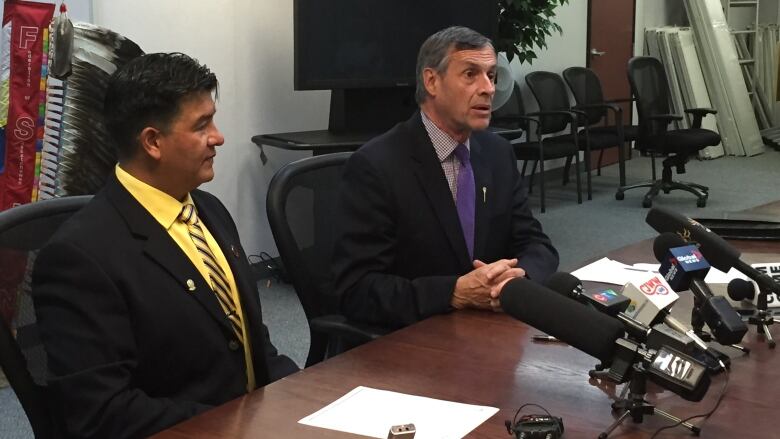Sask. Ministry of Education and First Nations sign accord
Pledge to build working relationship, while recognizing First Nations control of on-reserve education

It's being called the first of its kind in Canadaan agreement between Saskatchewan's Ministry of Education and the Federation of Saskatchewan Indian Nations to keep working together, while recognizing First Nations' control of education onreserves.
The agreement was formally signed in Saskatoon Wednesday.
It does not promise any more money than the $6 million the province already spends to help support on-reserve schooling.
The thrust appears to be mainly symbolic and perhaps a rebuke, intentional or not, to the federal Conservative government. Its Bill C-33, titled First Nations Control of First Nations Education, is widely seen as anything but that by the chiefs that reject it. Some chiefs in Saskatchewan supported the bill.
- Some Saskatchewan First Nations say they support Bill C-33
- First Nations education bill should be withdrawn immediately, chiefs demand
We cannot afford to give up the control and jurisdiction.- FSIN Vice-Chief Bobby Cameron
Those chiefs whoreject the bill havedone so even as the federal government withholds additional funding for education until First Nations support the bill, said FSIN vice-chief Bobby Cameron.
"We cannot afford to give up the control and jurisdiction," said Cameron at today's signing. "That has to remain within each chief and council and their membership."
The agreement also formally recognizes that First Nations' treaty and inherent right to education remains a federal responsibility.
For his part, Saskatchewan's education minister Don Morgan said his main wish is to see more First Nations students complete high school.
High school graduation numbers improving
In 2009, the Grade 12 graduation rate was 72.3 per cent for all students provincially but just 32.7 per cent for Aboriginal students.
The province aims to close that gap by at least half by the year 2020.
"There's a lot of history that's taken place in the past, and what we're intending to do is work with FSIN, work with our partners all the way across the province to try and identify the things that we can do to improve those outcomes," Morgan said.
And indeed, the picture seems to be improving.
Cameron said in 2012 First Nations had 600 high school graduates. That number increased by 50 in each subsequent year (to 650 in 2013, 700 in 2014, and 750 in 2015).
Steps the province has already taken to support First Nations education include a special mentoring program at school and after school, shared speech pathologist services in 16 schools, and the inclusion of First Nations schools in the province's licensing agreement with software giant Microsoft.












_(720p).jpg)


 OFFICIAL HD MUSIC VIDEO.jpg)
.jpg)



























































































